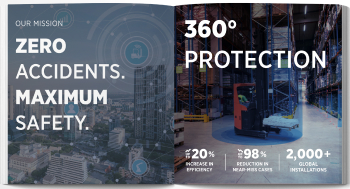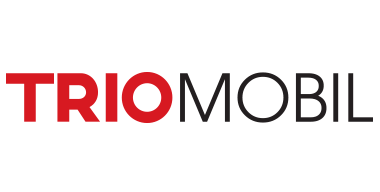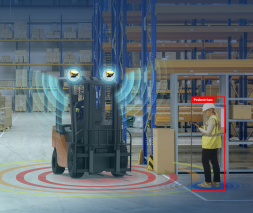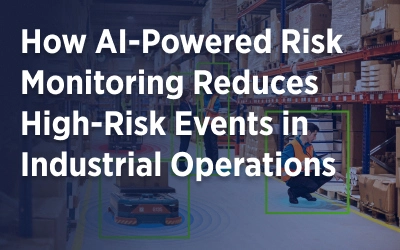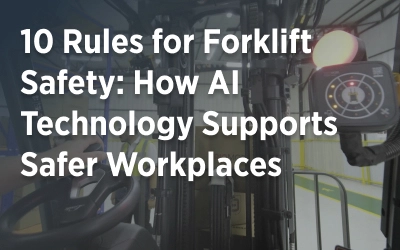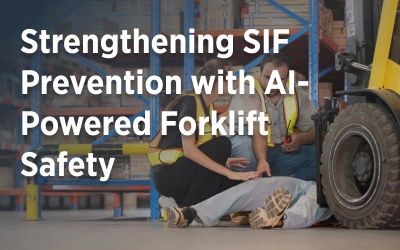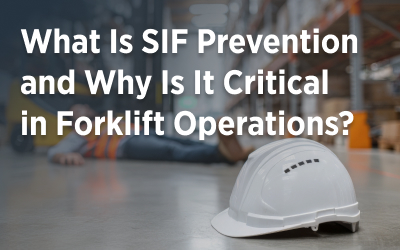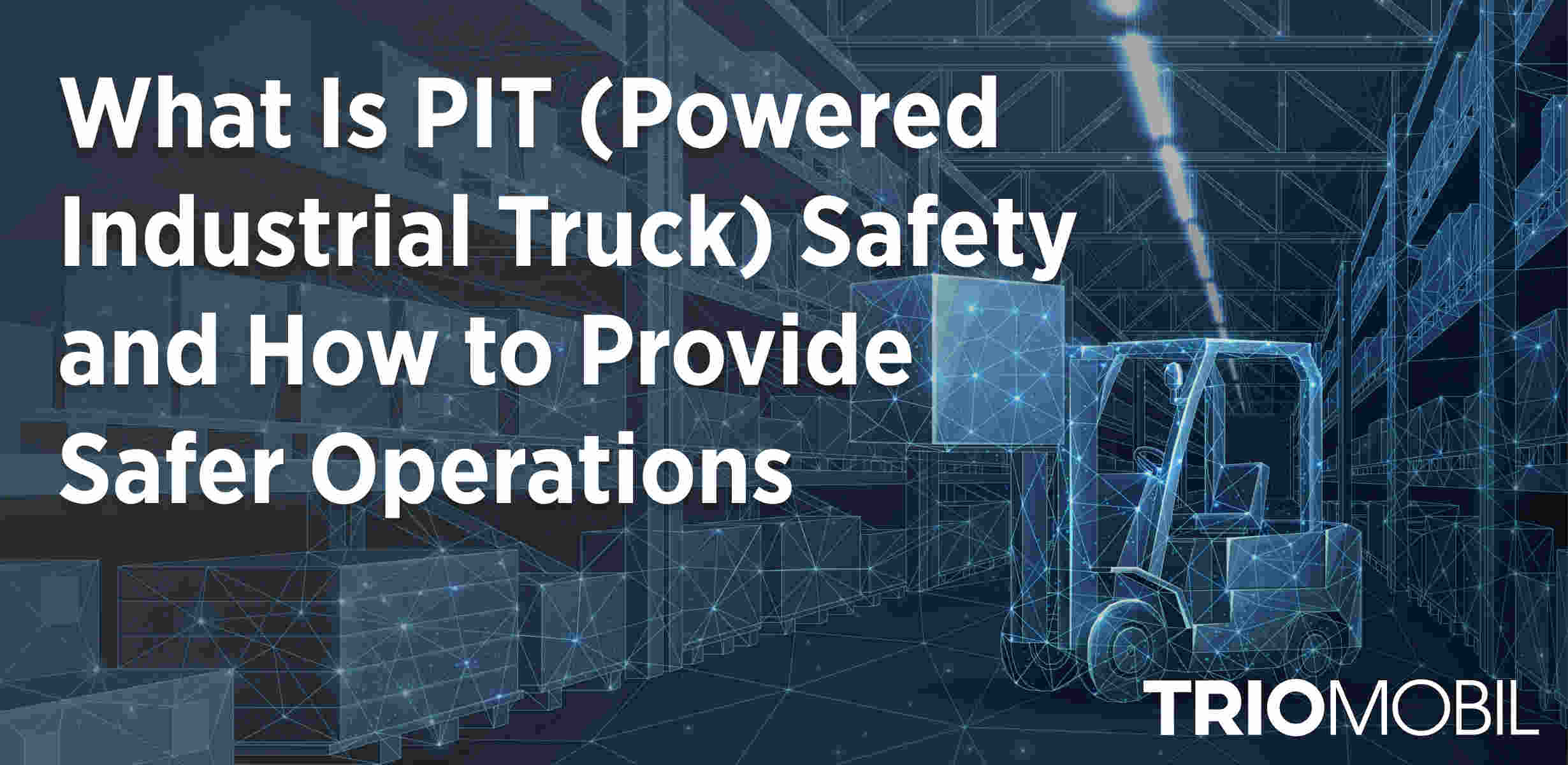
In busy industrial environments, movement is constant—materials are lifted, stacked, transported, and repositioned all day long. At the heart of this activity are Powered Industrial Trucks (PITs), a broad category of vehicles that includes forklifts, pallet jacks, tow tractors, reach trucks, and more.
While these machines are essential for productivity, they also introduce serious safety risks, especially when operating in environments where people and vehicles share the same space. Each year, thousands of injuries and dozens of fatalities are linked to PIT-related incidents. And while safety programs often focus on forklifts, that’s only part of the picture.
The challenge is that many PIT-related hazards go unaddressed. Blind spots, unpredictable pedestrian movement, excessive speed in confined areas, and operator fatigue can all contribute to accidents. In many facilities, outdated safety measures, such as painted floor lines or standard mirrors, aren’t enough to prevent these risks from turning into real harm.
This article focuses on what PIT safety really means, the risks involved, how regulations apply, and what practical steps facilities can take to create safer, more reliable operations for both people and equipment.
What Is a PIT (Powered Industrial Truck)?
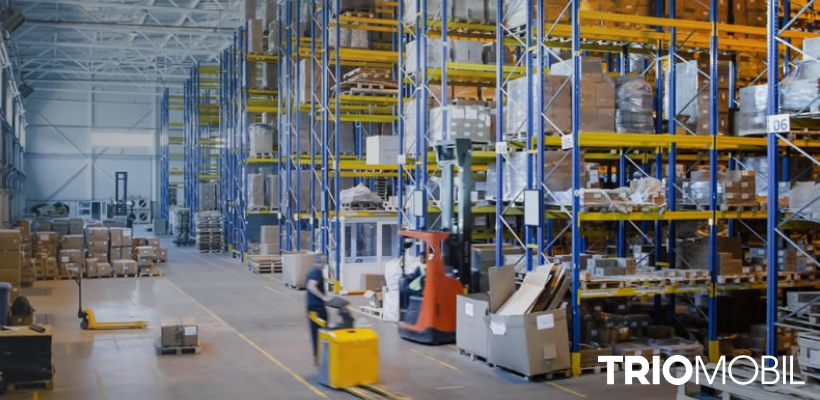
A Powered Industrial Truck (PIT) is defined by OSHA as “any mobile, power-propelled truck used to carry, push, pull, lift, stack, or tier materials.” This definition includes a wide range of equipment used in warehouses, factories, and distribution centers.
PITs are not limited to forklifts. Common examples include:
- Counterbalance forklifts
- Electric pallet jacks
- Order pickers
- Reach trucks
- Tow tractors
- Narrow aisle trucks
These vehicles differ significantly in terms of size, function, speed, maneuverability, and the way they interact with the environment. For instance, reach trucks are used in narrow storage aisles and present rear visibility challenges, while tow tractors often operate in larger areas but introduce risks at intersections and shared pathways.
Because of these differences, each type of PIT requires specific safety considerations. A generic or forklift-only approach to safety is not sufficient. Facilities must identify all PITs in use, understand how and where they operate, and implement targeted safety measures accordingly.
A complete PIT safety strategy begins with correct equipment classification. Recognizing the full range of powered vehicles in a facility is essential to assessing risk accurately and applying effective control measures.
The Risks Behind Powered Industrial Truck (PIT) Operations
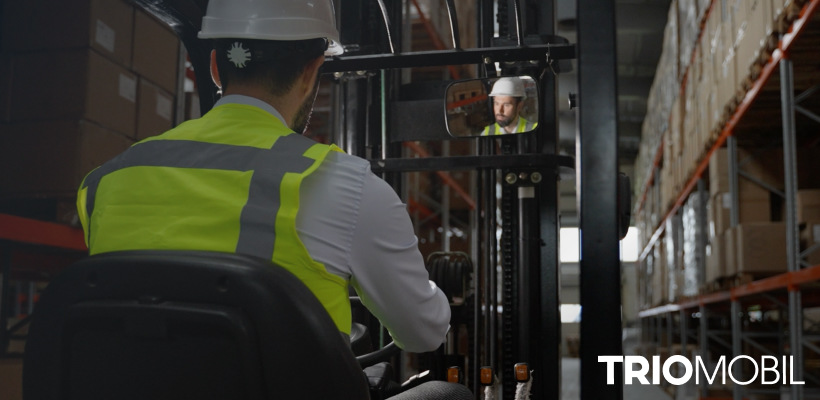
Incidents involving PITs often stem from predictable risk factors that can be mitigated with the right tools and practices. The table below summarizes the most common operational risks found in industrial environments.
| Risk Area |
Description |
Impact |
| Limited Visibility |
Obstructed views from loads, vehicle design, or racking systems |
Increased collision risk with pedestrians and equipment |
| Pedestrian Interaction |
Shared spaces with unclear boundaries between foot and vehicle traffic |
Higher likelihood of pedestrian-related incidents |
| Unsafe Speed |
Inconsistent speeds in sensitive areas with no enforced control |
Reduced reaction time, increased severity of collisions |
| Operator Inattention |
Fatigue, distractions, and overconfidence affecting operator awareness |
Greater potential for human error in dynamic environments |
| No Real-Time Detection |
Reliance on static signs and alarms that don’t adapt to live conditions |
Missed risks, delayed reactions, and lack of automated intervention |
What OSHA Says About PIT Safety
OSHA regulates the use of Powered Industrial Trucks under
29 CFR 1910.178, establishing minimum requirements for training, operation, and maintenance. These rules apply to all workplaces where PITs are used and serve as a foundation for basic safety practices.
Facilities must ensure compliance in the following key areas:
- Operator Training: Equipment-specific training with evaluation; refresher training every 3 years or after any incident.
- Inspections & Maintenance: Daily checks before use; unsafe PITs must be removed from service until repaired.
- Safe Operating Practices: Maintain safe speeds, clear visibility, secured loads, and pedestrian right of way.
- Workplace Conditions: Ensure clean floors, adequate aisle space, proper ventilation, and marked pedestrian/PIT zones.
Rethinking PIT Safety: From Static Tools to Real-Time Protection
For years, facilities have relied on traditional methods like mirrors, painted floor lines, signage, and beeping alarms to manage PIT-related risks. These tools offer a basic level of awareness but fall short in dynamic environments where people and powered industrial trucks frequently cross paths.
- Mirrors and floor markings offer no alerts or feedback and depend entirely on operator attention becoming an unreliable safeguard in fast-paced zones.
- Beacons and alarms are often overused, leading to noise saturation and alarm fatigue. They don’t distinguish between low-risk and high-risk proximity.
- Signage and labels are passive and easily overlooked during busy operations. They provide no real-time insight into developing risks.
As operations become more complex, these methods cannot adapt fast enough. What’s needed is a responsive system that reacts instantly to changing conditions on the floor.
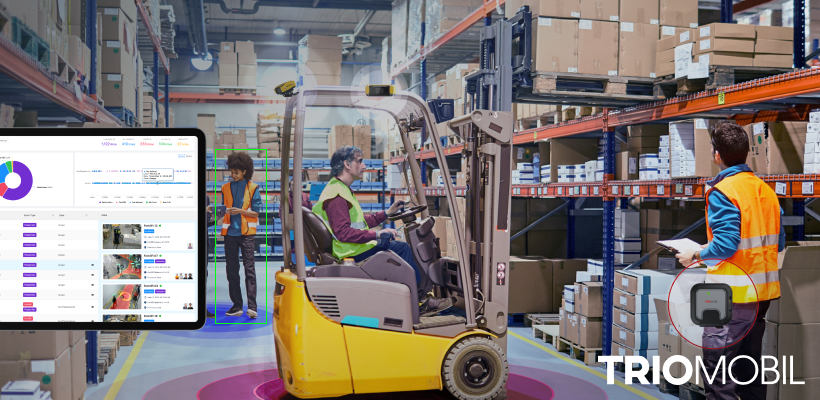
At Trio Mobil, we recognize the critical role safety plays in reducing risks and enhancing operational efficiency. That’s why we’ve developed PIT safety solutions, providing a comprehensive infrastructure for real-time risk prevention.
Trio Safe AI establishes a 360° digital safety zone around Powered Industrial Trucks (PITs). If a pedestrian or another vehicle enters this zone, the operator receives clear audiovisual alerts. The system is highly directional and precise, reducing distractions and improving reaction times to address potential risks.
Our AI Vision Insights uses AI-enabled cameras to identify people in high-risk areas and analyze safety conditions. This proactive system helps maintain awareness and reduce the likelihood of accidents.
FleetBridge connects every PIT to a cloud-based platform, centralizing real-time data from your entire fleet. It tracks key metrics such as usage trends, impact management, and zone-based activity to identify risks early. Managers can view historical data, set custom alerts, and generate reports for compliance and performance tracking — all through a single, intuitive dashboard.
How Smarter Systems Improve PIT Safety in Daily Operations
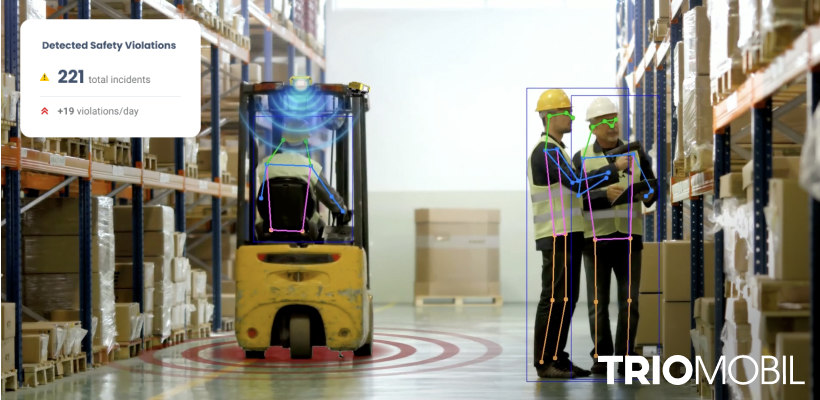
Implementing real-time safety systems changes how facilities manage PIT operations. Instead of relying on operator judgment or static signs, risks are detected and addressed as they happen.
- Proximity alerts give operators immediate warnings when a pedestrian or another PIT enters their path. They reduce reaction time and prevent close calls.
- AI cameras detect pedestrians, even those without tags, and issue alerts only when they’re in danger zones. This avoids constant false alarms.
- PIT Fleet Management system provides that PITs are monitored in real-time for usage, driver behavior, and efficiency. Unsafe actions like overspeeding or harsh braking are flagged instantly. Access is restricted to authorized operators, and instant alarms for impacts prevent further breakdowns.
In practice, this means:
- Fewer manual checks and verbal warnings.
- More consistent driving behavior.
- Clearer pedestrian awareness, even in busy or low-visibility areas.
- Data to back up safety decisions and target improvements.
Building a Safer Facility with Trio Mobil Solutions for PIT Safety
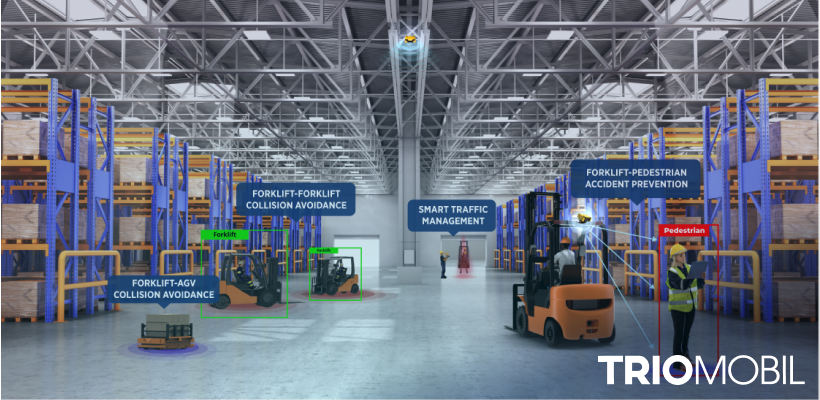
Trio Mobil is leading the evolution of workplace safety with advanced PIT (Powered Industrial Truck) safety systems, purpose-built for high-risk environments where people and industrial vehicles operate side by side. Through the integration of cutting-edge AI, IoT, and UWB technologies, our solutions deliver real-time risk detection, proximity alerts, automated speed control, and both tag based and tagless pedestrian monitoring.
Designed for modularity and seamless deployment, the system adapts to different vehicle types, facility layouts, and operational workflows. This promotes consistent safety performance across warehouses, factories, and distribution centers without disrupting productivity.
Trusted by over 2,000 global brands, including some of the world’s most demanding industrial operations, Trio Mobil’s solutions offer more than compliance because they deliver measurable safety and operational control.
To learn how our real-time PIT safety system can reduce risk and enhance visibility across your facility, visit our website or request a live demo.
